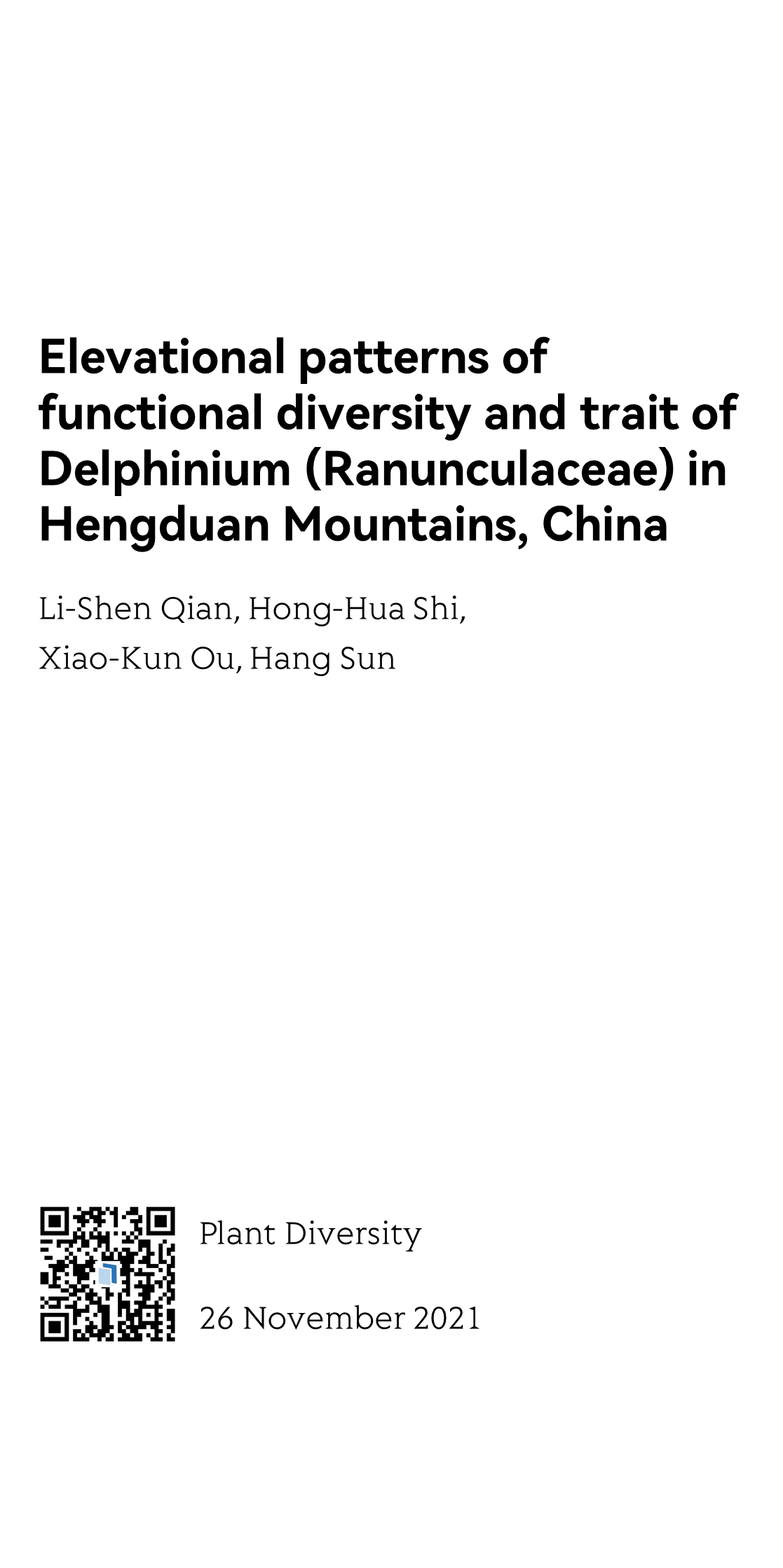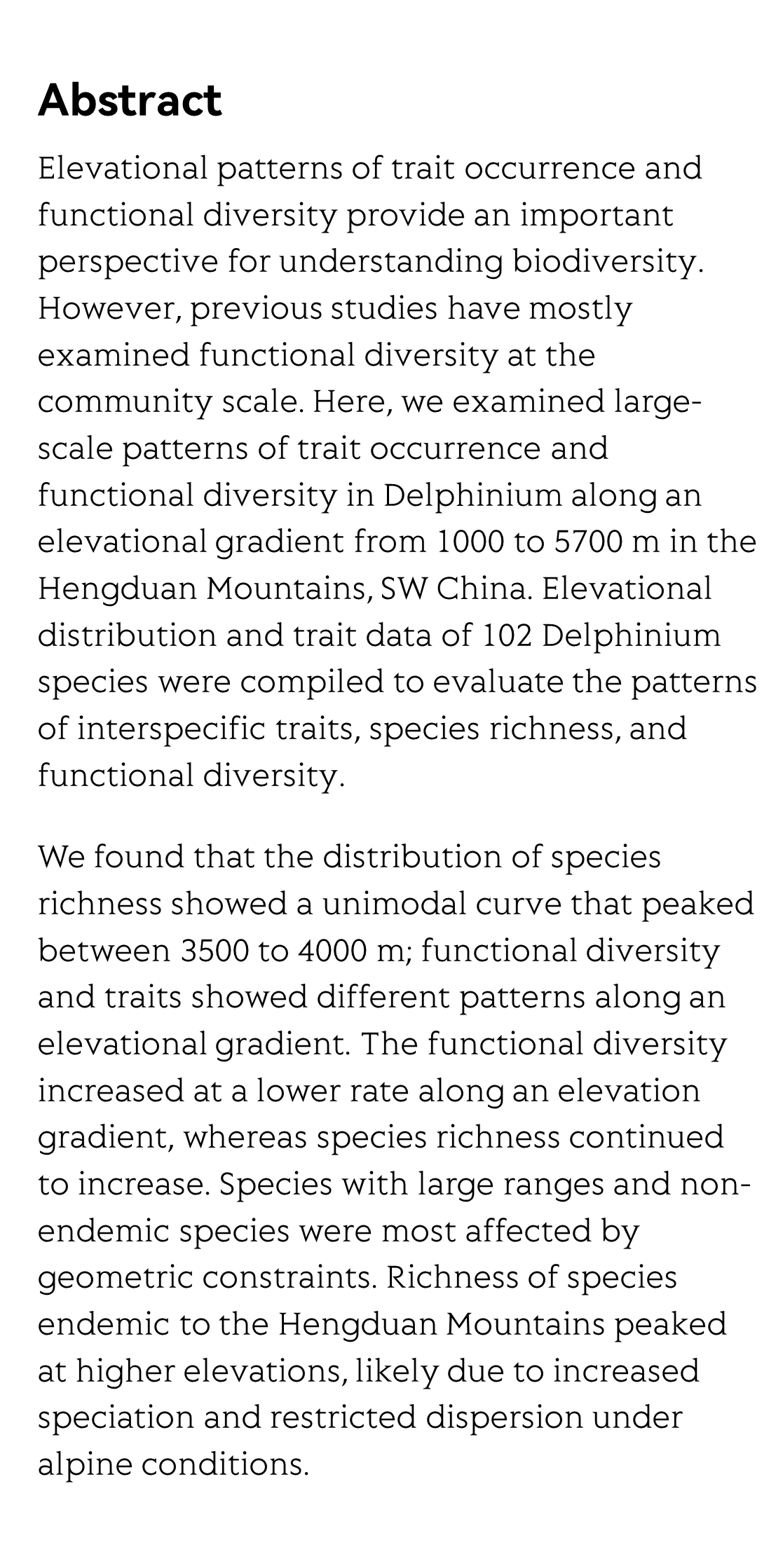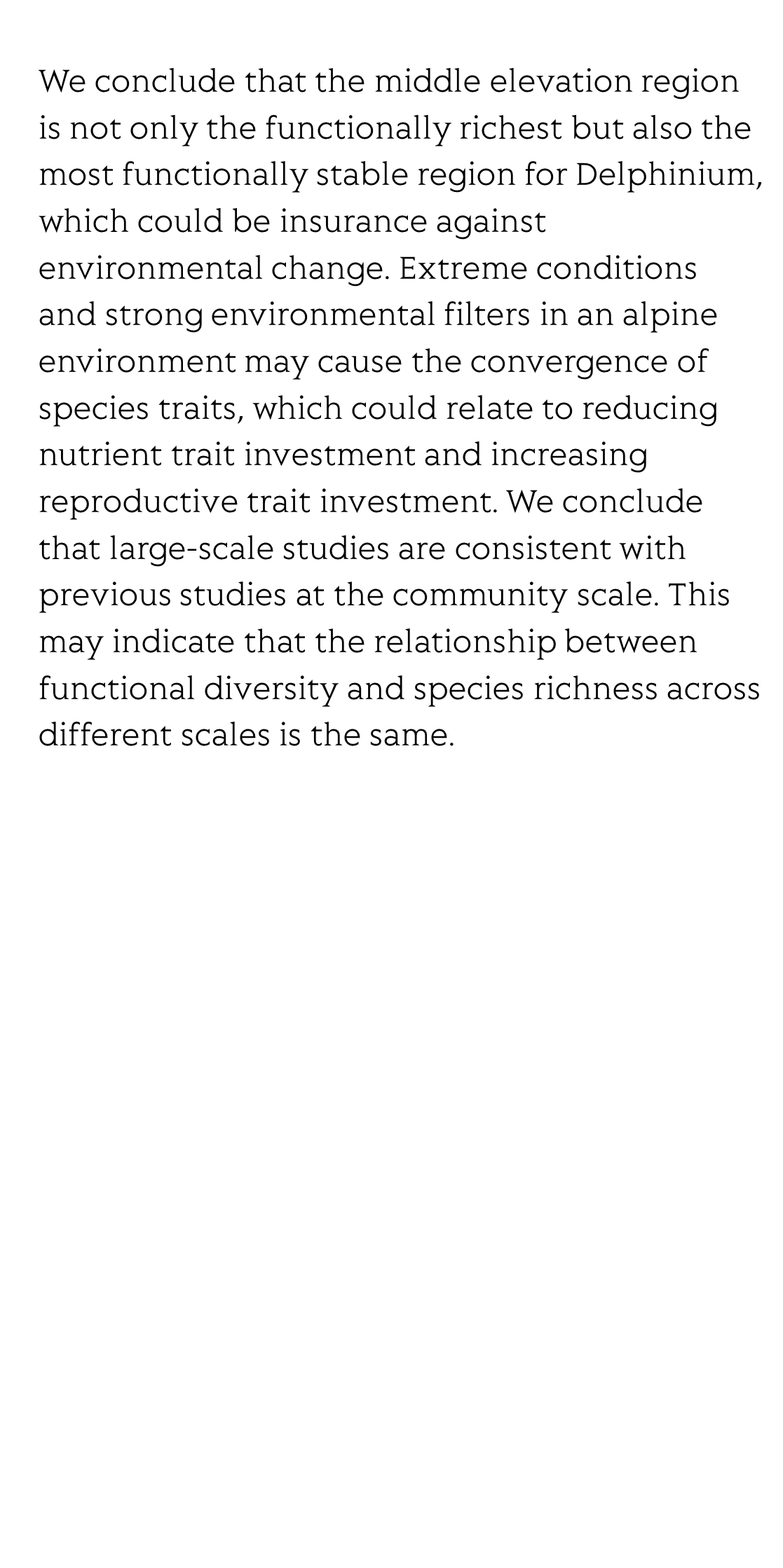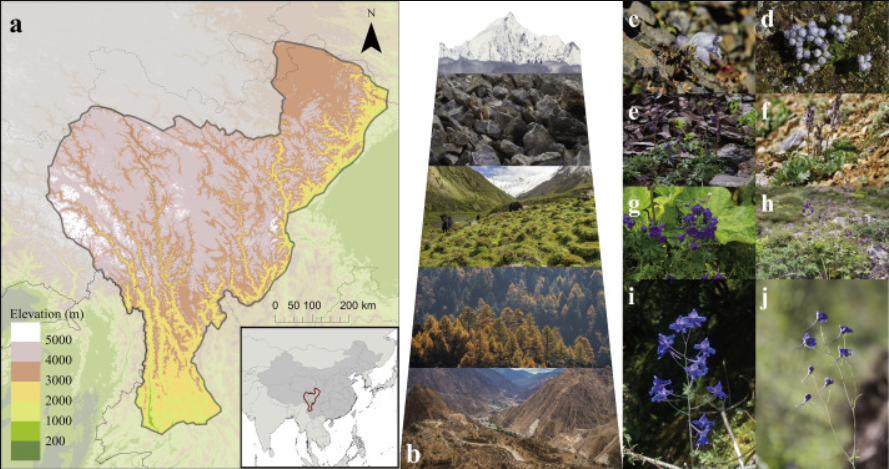(Peer-Reviewed) Elevational patterns of functional diversity and trait of Delphinium (Ranunculaceae) in Hengduan Mountains, China
Li-Shen Qian ¹ ² ³, Hong-Hua Shi ² ³, Xiao-Kun Ou 欧晓昆 ⁴, Hang Sun 孙航 ³
¹ School of Life Sciences, Yunnan University, Kunming, 650091, China
中国 昆明 云南大学生命科学学院
² University of Chinese Academy of Sciences, Beijing, 100049, China
中国 北京 中国科学院大学
³ CAS Key Laboratory for Plant Diversity and Biogeography of East Asia, Kunming Institute of Botany, Chinese Academy of Sciences, Kunming, 650201, China
中国 昆明 中国科学院昆明植物研究所 东亚植物多样性与生物地理学重点实验室
⁴ School of Ecology and Environmental Science, Yunnan University, Kunming, 650091, China
云南大学生态与环境学院
Abstract
Elevational patterns of trait occurrence and functional diversity provide an important perspective for understanding biodiversity. However, previous studies have mostly examined functional diversity at the community scale. Here, we examined large-scale patterns of trait occurrence and functional diversity in Delphinium along an elevational gradient from 1000 to 5700 m in the Hengduan Mountains, SW China. Elevational distribution and trait data of 102 Delphinium species were compiled to evaluate the patterns of interspecific traits, species richness, and functional diversity.
We found that the distribution of species richness showed a unimodal curve that peaked between 3500 to 4000 m; functional diversity and traits showed different patterns along an elevational gradient. The functional diversity increased at a lower rate along an elevation gradient, whereas species richness continued to increase. Species with large ranges and non-endemic species were most affected by geometric constraints. Richness of species endemic to the Hengduan Mountains peaked at higher elevations, likely due to increased speciation and restricted dispersion under alpine conditions.
We conclude that the middle elevation region is not only the functionally richest but also the most functionally stable region for Delphinium, which could be insurance against environmental change. Extreme conditions and strong environmental filters in an alpine environment may cause the convergence of species traits, which could relate to reducing nutrient trait investment and increasing reproductive trait investment. We conclude that large-scale studies are consistent with previous studies at the community scale. This may indicate that the relationship between functional diversity and species richness across different scales is the same.
Flicker minimization in power-saving displays enabled by measurement of difference in flexoelectric coefficients and displacement-current in positive dielectric anisotropy liquid crystals
Junho Jung, HaYoung Jung, GyuRi Choi, HanByeol Park, Sun-Mi Park, Ki-Sun Kwon, Heui-Seok Jin, Dong-Jin Lee, Hoon Jeong, JeongKi Park, Byeong Koo Kim, Seung Hee Lee, MinSu Kim
Opto-Electronic Advances
2025-09-25
Dual-frequency angular-multiplexed fringe projection profilometry with deep learning: breaking hardware limits for ultra-high-speed 3D imaging
Wenwu Chen, Yifan Liu, Shijie Feng, Wei Yin, Jiaming Qian, Yixuan Li, Hang Zhang, Maciej Trusiak, Malgorzata Kujawinska, Qian Chen, Chao Zuo
Opto-Electronic Advances
2025-09-25







